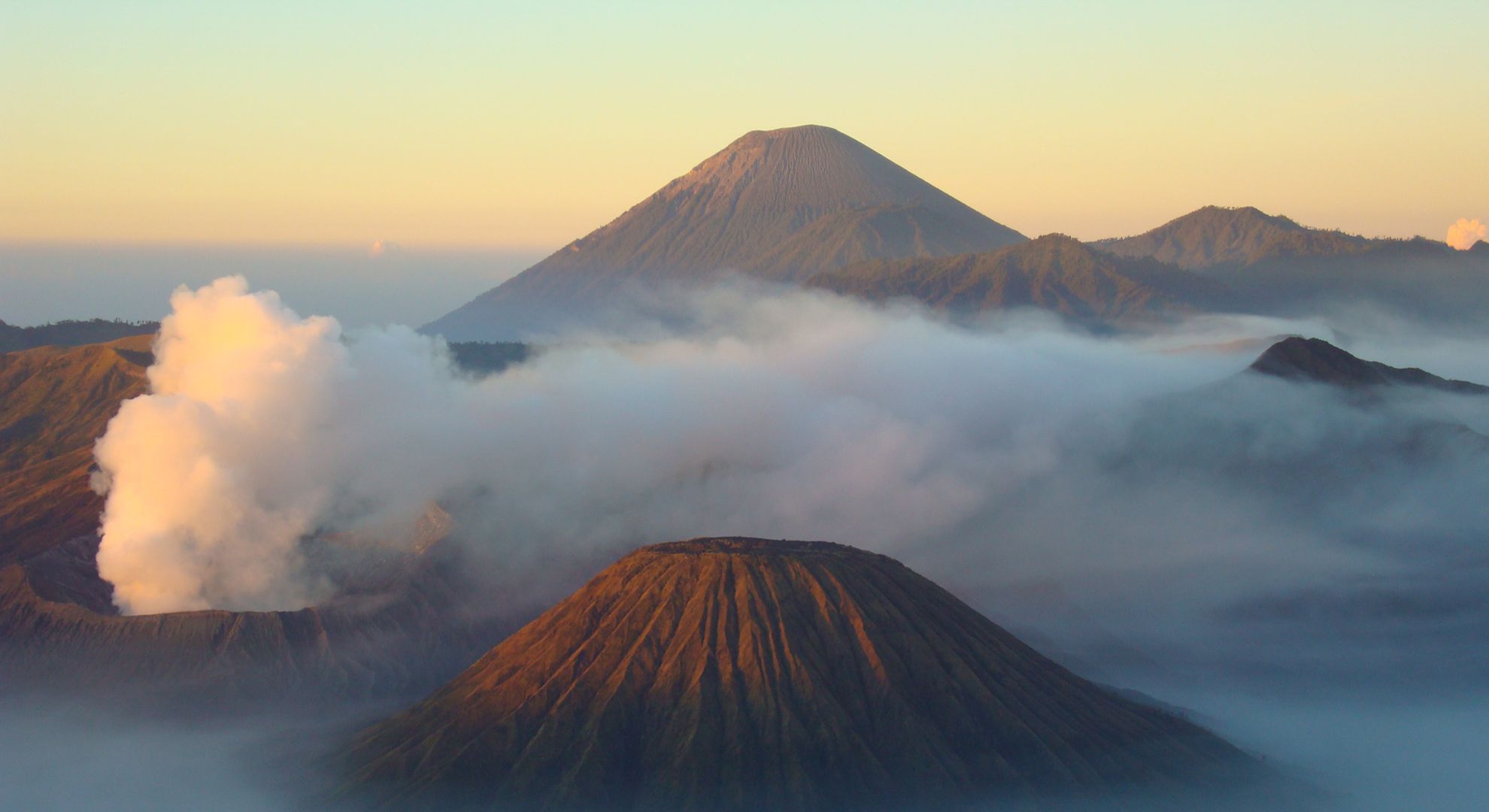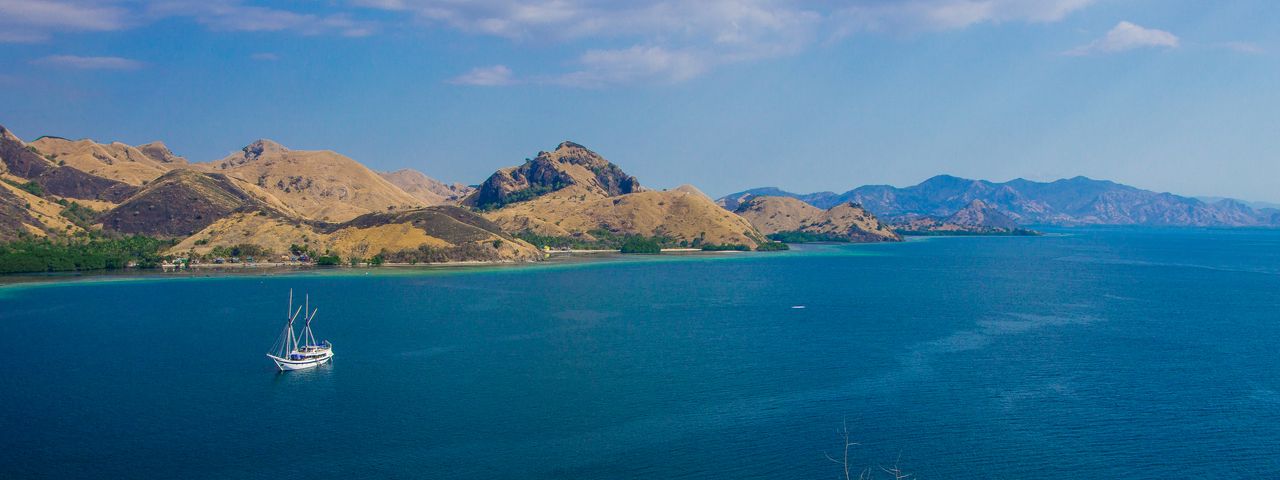When is the best time to visit Indonesia?
With the westernmost point a full 3200 miles from the eastern most tip, so it should come as no surprise that summarising the weather in Indonesia is not straightforward. The tables below split the ‘country’ (made up of 17,508 islands) into two regions - the western & central islands and the eastern islands (that sit to the east of the Wallace Line), however we encourage you to read the more detailed summaries below as there can be significant variations in conditions between the islands within each group.
For the western and central Indonesian islands (such as Bali, Java, the Gilis, Lombok and Komodo), the best time to visit Indonesia is during dry season which spans from May to September and this is the most popular time to visit the country. The wet season is between October & April, with rainfall occurring in short, heavy bursts.
However, the eastern islands such as Sulawesi, West Papua, Raja Ampat and the Moluccas Islands drum to a different beat and mostly peak between March and May and again in October.
Temperatures remain fairly constant year round with averages of 28°C throughout the region.
Indonesia weather & when to go
Pick a month below
West and Central Islands
Eastern Islands
Weather seasons are becoming less predictable but peak visitor months remain more certain.
Unfollow the herd - avoid the peak months to enjoy fewer crowds, better availability, often lusher countryside and help to spread the economic benefits of tourism.
Weather overview
Weather in Indonesia can be split into two seasons - wet and dry - with warm tropical temperatures averaging 28°C during the day, throughout the year. In most regions, the dry season spans from May to September, with the rains falling between October and April.
There are some regional exceptions. On Sumatra it rains from October to January in the north, and November to February in the south. Sulawesi, with its unusual shape, also experiences slightly different weather patterns and rainfall can be expected in the northern regions of the island during June and July.
Generally speaking, the best time of year to visit Indonesia is between May and September when the days are dry and sunny. However, during wet season temperatures remain high and rainfall comes in the form of intense tropical downpours that tend to last for a couple of hours and needn’t spoil your trip.
In some regions the difference between the two seasons is not extreme: Bali and Kalimantan, for example, are relatively unaffected by the season change, but the contrast typically grows as you travel further east into the Nusa Tenggara region (to the islands of Lombok, Flores and beyond) where there is a greater chance of flooding during the wet season and droughts in the dry.
It really depends on your travel plans: muddy back roads can be a problem during wet season if you intend to explore more off the beaten track locations and rough seas can render some islands inaccessible to smaller boats. The best months for diving off the coast of Bali, Lombok or the Komodo National Park are April to September, with rough seas particularly in January & February. If you plan to climb one of Indonesia's many volcanoes, such as Mt Bromo or Mt Rinjani, then dry season is recommended. Expect the temperature to cool as you climb, and pack some warmer layers.
Bali
Bali’s dry season spans from April to September, with days characterised by blue skies and sunshine. The months of May, June and September are arguably the best time to visit, when the weather conditions are idyllic but visitor numbers are not at their highest, meaning the popular beach resorts of Jimbaran, Sanur and Seminyak are not too crowded.
Bali’s wet season falls between October and March, but we're talking brief tropical rainfall rather than days of monsoonal downpours. Temperatures in Bali are fairly consistent year round, ranging from 26°C - 29°C, although the central regions around Ubud and the mountains, such as Mt Batur, experience cooler temperatures and higher rainfall than the coastal regions.
Java
The best time of year to visit the island of Java is during dry season which spans from May to September, when days are hot, dry and sunny. These months are also an ideal time to travel if you are planning on climbing the mountains of Bromo or Ijen.
Rainy season in Java runs from November to March, although East Java experiences less rainfall than the western regions. Days are characterised by regular, intense rain showers that tend to last for a couple of hours.
Temperatures are consistently warm year round, with average daily temperatures hovering around 28-30°C, although temperatures are cooler in the higher mountainous regions such as Mt Bromo, especially at night.
Nusa Tenggara
Lombok, Flores, Komodo National Park, Sumba
The islands of Nusa Tenggara, including Lombok & the Gilis, Flores & Sumba, typically experience dry season between April and September with plenty of sunshine and blue skies. These months are an ideal time to travel if you are planning to climb Mt Rinjani or dive off the coast of Lombok, the Gili islands and in the Komodo National Park. Wet season falls between October and March, with November, December and January seeing the most rainfall.
Like the neighbouring island of Bali, the average temperature is fairly consistent year round across the Nusa Tenggara islands, ranging from 27-29°C.
Sumatra
Sumatra is a fairly large island, split by the equator and weather conditions vary slightly across the island. Medan and North Sumatra experiences a more tropical climate with the possibility of rain showers year round, especially in the jungle-clad areas such as Bukit Lawang. The heaviest rainfall in the north is typically between October and January. Palembang and South Sumatra experiences a more definite split between wet and dry season, with drier weather typically occurring between April and October and rainfall from November to March. Average temperatures hover around 27-28°C throughout the year, although highs of 33-34°C are not uncommon during the drier, summer months.
Kalimantan
Kalimantan is a large island and weather conditions vary slightly across the island, with the southern regions being the driest and the rainforest-covered interior predictably the wettest.
The island experiences a light rainy season from March to May, with heavier rains falling between November and January. However, overall the rains on Kalimantan tend to be lower than neighbouring parts of Indonesia, such as the island of Java. Dry season spans from June until September, with August and September being the driest months of the year. Orang-utans can be spotted in the Tanjung Puting National Park throughout the year, although during rainy season they tend to be more elusive, preferring to shelter.
The temperature ranges from a warm 23°C at night to a hot 33°C during the day, with the hottest months typically May and August.
Sulawesi
Sulawesi, with its peculiar shape, experiences different weather conditions depending on where you are on the island. In Toraja and the southern part of the island monsoon rains fall between November & April; whilst the city of Manado and the northern regions experience rainfall year round, with the driest months between July & October. Temperature-wise it can get very stuffy on the coast, with highs of 34°C, dropping to a positively brisk 24°C in the hills of central Sulawesi.
The Moluccas
Weather conditions across the central Molucca islands of Ambon and Seram differ from the rest of Indonesia. Between the months of June and September these islands experience rainfall and are best visited between the months of October and May. Weather patterns across the southern Molucca islands of Kei, Aru and Tanimbar, and the northern islands of Ternate, Tidore and Halmahera are similar to the majority of Indonesia. These islands are best visited between the months of May and September.
West Papua & Raja Ampat
West Papua and the islands of Raja Ampat can be visited year-round; there isn’t really an off-season. The region experiences reliably consistent daily temperatures. In Raja Ampat daily temperatures average between 30°C and 34°C throughout the year and rarely drop below 10°C at night. The ocean is warm year-round too. In the highlands of Wamena and the Baliem Valley, at an altitude of 2000m+ above sea level, temperatures are cooler and average between 20°C and 25°C throughout the year. A drop below 10°C at night in the Baliem Valley can be expected.
Rainy season across the islands of Raja Ampat rather confusingly differs from the rest of Indonesia. Between the months of June and September there is a higher chance of rainfall and strong winds can be expected: not ideal conditions for boat journeys or diving. In the Baliem Valley, at altitude, showers can be expected year-round, with the wettest months of the year being May and June. However, rainfall in the region typically comes in the form of brief, heavy downpours as opposed to all-day monsoonal rain.

